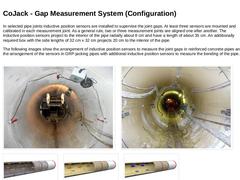
|

In selected pipe joints inductive position sensors are installed to supervise the joint gaps. At least three sensors are mounted and calibrated in each measurement joint. As a general rule, two or three measurement joints are aligned one after another. The inductive position sensors project to the interior of the pipe radially about 8 cm and have a length of about 35 cm. An additionally required box with the side lengths of 32 cm x 32 cm projects … |
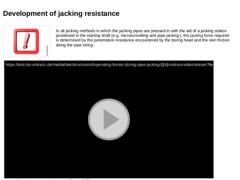
|
|
(Image: Attention!)
In all jacking methods in which the jacking pipes are pressed in with the aid of a jacking station positioned in the starting shaft (e.g. microtunnelling and pipe jacking ), the jacking force required is determined by the penetration resistance encountered by the boring head and the skin friction along the pipe string. (Video: Operating forces during pipe jacking) |
|
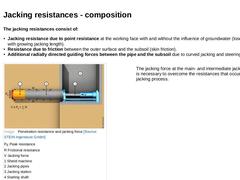
|
The jacking resistances consist of: -
Jacking resistance due to point resistance at the working face with and without the influence of groundwater (loses importance with growing jacking length).
-
Resistance due to friction between the outer surface and the subsoil (skin friction).
-
Additional radially directed guiding forces between the pipe and the subsoil due to curved jacking and steering errors.
(Image: Penetration resistance and jacking force) |
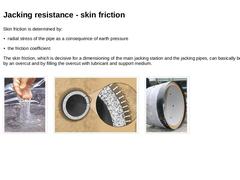
|
Skin friction is determined by: The skin friction, which is decisive for a dimensioning of the main jacking station and the jacking pipes, can basically be influenced by an overcut and by filling the overcut with lubricant and support medium. (Image: T.B.K. system [FI-TBKa] - Injection medium (Polymer drilling fluid consisting of polymer and water)) (Image: Annular … |
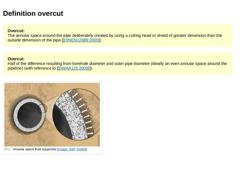
|

|
Overcut:
The annular space around the pipe deliberately created by using a cutting head or shield of greater dimension than the outside dimension of the pipe [ [DINEN12889:2000]]. |
|
|
|
Overcut:
Half of the difference resulting from borehole diameter and outer pipe diameter (ideally an even annular space around the pipeline) (with reference to [ [DWAA125:2008]]). |
|
|
|
(Image: Annular space fluid supported) |
|
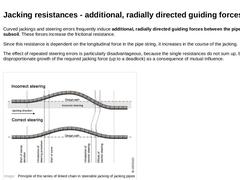
|
Curved jackings and steering errors frequently induce additional, radially directed guiding forces between the pipe and the subsoil. These forces increase the frictional resistance. Since this resistance is dependent on the longitudinal force in the pipe string, it increases in the course of the jacking. The effect of repeated steering errors is particularly disadvantageous, because the single resistances do not sum up, but lead to disproportionate … |
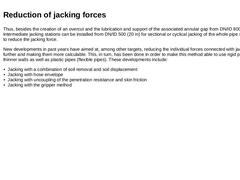
|
Thus, besides the creation of an overcut and the lubrication and support of the associated annular gap from DN/ID 800 (32 in), intermediate jacking stations can be installed from DN/ID 500 (20 in) for sectional or cyclical jacking of the whole pipe string in order to reduce the jacking force. New developments in past years have aimed at, among other targets, reducing the individual forces connected with jacking still further and making them more calculable. … |
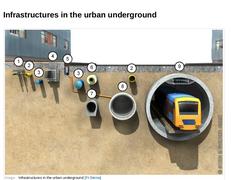
|
|
(Image: Infrastructures in the urban underground [FI-Steina]) |
|
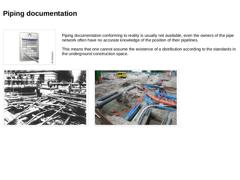
|

|
(Image: Documentation) |
Piping documentation conforming to reality is usually not available, even the owners of the pipe network often have no accurate knowledge of the position of their pipelines. This means that one cannot assume the existence of a distribution according to the standards in the underground construction space. |
|
(Image: Underground pipelines in New York about 1916 [Boegl69]) |
(Image: Unprofessional installed cables and pipelines [… |
|
|
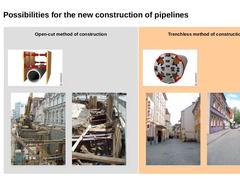
|
|
Open-cut method of construction (Image: Open cut method)
|
(Image: Sheeted trench for the installation by open-cut method of construction) |
(Image: Urban installation of pipelines) |
|
Trenchless method of construction (Image: Geschlossene Bauweise)
|
(Image: Accessible city centre area in spite of construction works) |
(Image: Accessible city centre area in spite of construction works) |
|
|
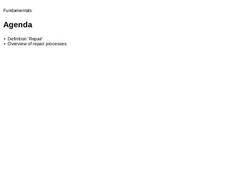
|

|

|

|
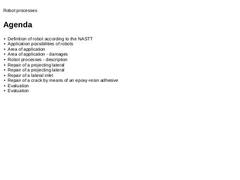
|

|
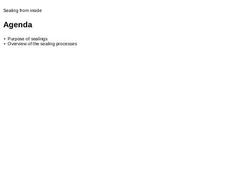
|

|
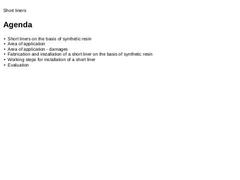
|

|
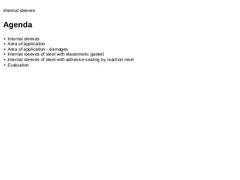
|

|
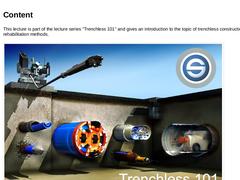
|

This lecture is part of the lecture series "Trenchless 101" and gives an introduction to the topic of trenchless construction and rehabilitation methods. (Image: Trenchless 101) |
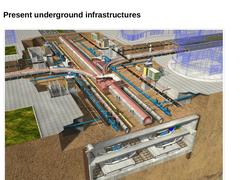
|

| (Image: Overview of the present underground infrastructures)
|
|
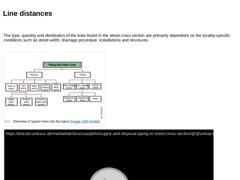
|

The type, quantity and distribution of the lines found in the street cross section are primarily dependent on the locality-specific conditions such as street width, drainage procedure, installations and structures. (Image: Overview of typical inner-city line types) (Video: Supply and disposal piping in street cross section) |
|
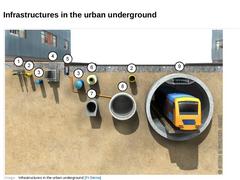
|

| (Image: Infrastructures in the urban underground [FI-Steina])
|
|
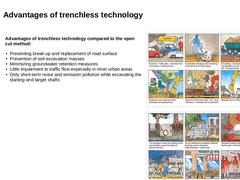
|

|
Advantages of trenchless technology compared to the open cut method: - Preventing break-up and replacement of road surface
- Prevention of soil excavation masses
- Minimizing groundwater retention measures
- Little impairment to traffic flow especially in inner urban areas
- Only short-term noise and emission pollution while excavating the starting and target shafts
| |
(Image: Disadvantages of the open cut method for installing drains and sewers (Part 1) [GSTT])
|
|
|
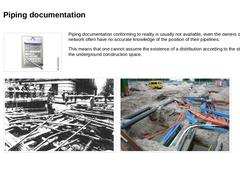
|

| (Image: Documentation)
|
Piping documentation conforming to reality is usually not available, even the owners of the pipe network often have no accurate knowledge of the position of their pipelines. This means that one cannot assume the existence of a distribution according to the standards in the underground construction space. | |
(Image: Underground pipelines in New York about 1916 [Boegl69])
|
(Image: Unprofessional installed cables and pipelines [… |
|
|
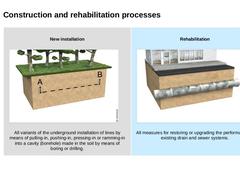
|

| New installation (Image: New installation)
All variants of the underground installation of lines by means of pulling-in, pushing-in, pressing-in or ramming-in into a cavity (borehole) made in the soil by means of boring or drilling. | Rehabilitation (Image: Rehabilitation)
All measures for restoring or upgrading the performance of existing drain and sewer systems. |
|

|

|
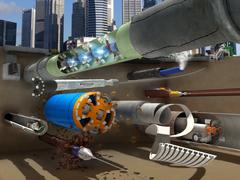
|

This lecture is part of the series "Trenchless 101" and serves to provide an overview of trenchless methods for the new installation and rehabilitation of supply and disposal lines. |